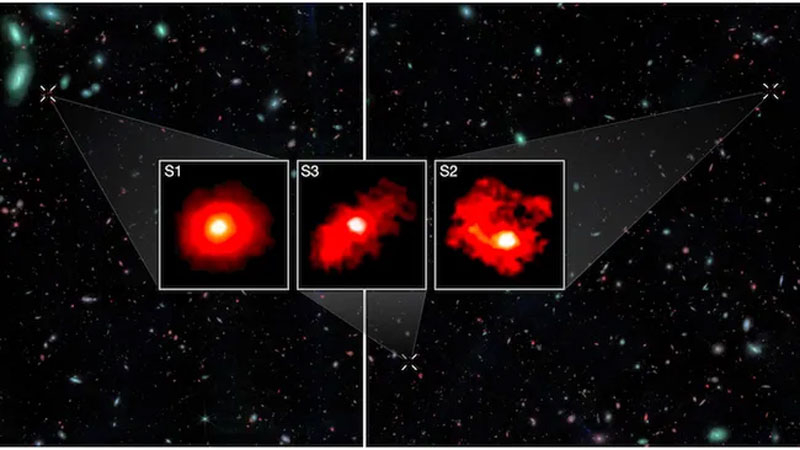In data from the space observatory. James Webb, scientists have discovered three “Red Monsters” – three supermassive galaxies for their time, the rate of formation of which goes beyond the scope of modern cosmology. The sample is small, but it forces us to look for new signs of our inaccurate understanding of the nature of the formation of stars and galaxies in the early stages of the Universe.

Image source: University of Geneva
An international team of scientists led by astronomers from the University of Geneva (UNIGE) used data collected by Webb on galaxies at redshifts from z=5 to z=9. For these values, the age of the Universe was 1–1.5 billion years. Due to the accelerated expansion of stars and galaxies in the Universe, the wavelength of photons becomes longer and goes into an increasingly red region, which can be determined from spectral measurements. Webb specializes in this. Thus, it allows you to determine the distances to objects and their mass with acceptable accuracy.
Scientists selected 36 distant, massive, dusty, star-forming galaxies for in-depth analysis. Of this number, 33 galaxies fell within the framework of modern ideas about the rate of their formation, but three went far beyond the limits of the models. For this uniqueness and super-large mass, these three objects were called “Red Monsters”. Calculations showed that to achieve the observed masses, the rate of star birth in them had to be 50% higher than predicted.
It cannot be ruled out that errors could have crept into the observational data. And yet, scientists do not exclude the possibility that in the early Universe conditions could have developed to accelerate the processes of star birth. So far, the factual material is not enough to shake the foundations of modern cosmology. There is only a hint of incomplete knowledge about processes and phenomena in the early Universe. “Webb” is unlikely to become an instrument that will leave no stone unturned on previous views, but it did raise doubts, and in science there is nothing more valuable than criticism and healthy skepticism.